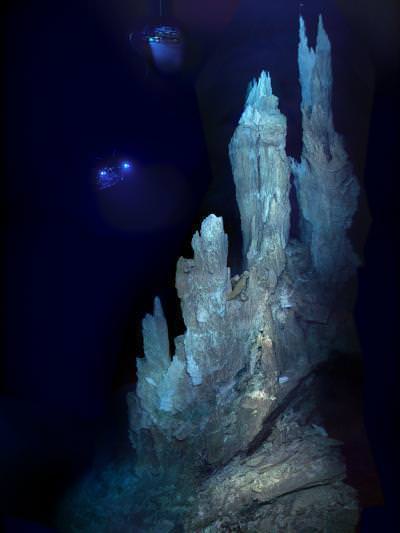[/caption]
White sand, blue water, sunny skies, pina coladas. When you think of “extreme environments” I doubt the Caribbean is high on your list. But a team of scientists from Woods Hole Oceanographic institute and NASA’s Jet Propulsion Laboratory, exploring the 68-mile-long Mid-Cayman rise deep beneath the surface of the Caribbean, have discovered the deepest known hydrothermal vent in the world, along with two other distinct types of vents.
The mid-Cayman rise is a much smaller version of the mid-ocean ridge system, a chain of submarine mountains that encircles the globe. These ridges form in locations where tectonic plates are pulling apart, allowing mantle rocks to melt and emerge at the surface as lava. Seawater, percolating through the hot rocks at these spreading centers, is superheated and emerges at vents, bearing a rich bounty of dissolved nutrients to support thriving ecosystems that can live without any sunlight.
“This was probably the highest-risk expedition I have ever undertaken,” said chief scientist Chris German, a Woods Hole Oceanographic Institution geochemist who has pioneered the use of autonomous underwater vehicles to search for hydrothermal vent sites. “We know hydrothermal vents appear along ridges approximately every 100 kilometers [62 miles]. But this ridge crest is only 100 kilometers long, so we should only have expected to find evidence for one site at most. So finding evidence for three sites was quite unexpected – but then finding out that our data indicated that each site represents a different style of venting – one of every kind known, all in pretty much the same place – was extraordinarily cool.”

